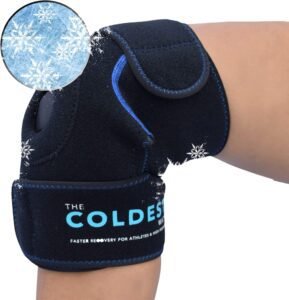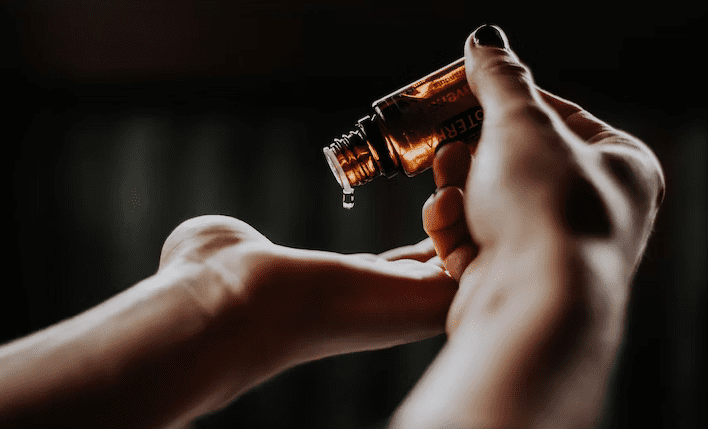If you or someone you know has rheumatoid arthritis, you’re probably aware of the everyday hardships it brings. Massage treatment, fortunately, may provide much-needed relaxation and relief. In this detailed guide, we’ll look at how to massage someone with rheumatoid arthritis to assist them in managing pain, improving joint mobility, and improving their general well-being.
Rheumatoid arthritis causes joint irritation and stiffness; thus, gentle and focused massage methods are essential for ensuring a safe and successful session. Understanding the specific requirements and limits of those suffering from rheumatoid arthritis allows you to give a relaxing and therapeutic experience that provides much-needed relief. Whether you’re a professional massage therapist or a caregiver, this guide will offer the information and methods you need to make a difference. Let’s get started!
Understanding Rheumatoid Arthritis:

Rheumatoid arthritis (RA) is a chronic autoimmune disease affecting the joints. It happens when the body’s immune system attacks the synovial lining of the joints by mistake, causing inflammation, discomfort, and stiffness. This debilitating illness can also affect other body regions, such as the muscles, tendons, and organs.
Joint swelling, morning stiffness, weariness, and limited range of motion are common symptoms of rheumatoid arthritis. RA severity and progression vary from person to person, including flare-ups and remissions.
Aside from the physical symptoms, rheumatoid arthritis may substantially influence an individual’s quality of life, making even the most basic daily tasks difficult. To provide a successful massage treatment, it is essential to understand the impact of RA on both joints and a person’s general well-being.
Massage therapists and caregivers can assist in alleviating pain, reducing inflammation, increasing joint flexibility, and improving overall physical and emotional well-being by addressing the unique requirements and limits of people with rheumatoid arthritis.
Preparing for the Massage:
Before giving a massage to someone with rheumatoid arthritis (RA), several precautions must be taken to ensure a safe and enjoyable experience. It is important to consult with a healthcare practitioner to understand the individual’s unique needs, restrictions, and any precautions to take during the massage.
Creating a comfortable and safe environment is key. Begin by adjusting the room temperature to a reasonable level, providing adequate lighting, and playing quiet, calming music to promote relaxation. A padded massage table or a comfy chair with adequate support might help relieve pain.
Furthermore, discussing honestly with the individual before the session is necessary. Discuss their pain levels, areas of concern, and any pressure or technique preferences they may have. You may tailor the massage to deliver the most benefit if you understand their requirements and expectations.
Finally, ensure you have all required products, such as massage oils or lotions for sensitive skin. These preparations will ensure that people with rheumatoid arthritis have a pleasant massage session.
Read: Can Neck Massage Cause Vertigo
Massage Techniques for Rheumatoid Arthritis:

Massage techniques that give relief while being gentle and adapting to the individual requirements of someone with rheumatoid arthritis (RA) are vital. Consider the following efficient massage techniques:
- Easy Strokes and Effleurage: To warm up the muscles and stimulate circulation, begin the massage session with easy strokes and effleurage. Use lengthy, sweeping strokes with gentle pressure to calm and relax the afflicted regions.
- Exercises for Joint Mobilization and Range of Motion: Maintaining joint mobility and increasing range of motion are priorities. Use mild joint mobilization techniques such as circular movements or gradual oscillations to relieve stiffness and promote joint flexibility.
- Acupressure and Trigger Point Therapy: To relieve pain and stress, apply focused pressure to certain acupressure and trigger point areas. These spots, which are frequently positioned near the affected joints, can aid in releasing muscular knots and promoting relaxation.
- Massage instruments and Aids: Use massage instruments and aids to improve the massage experience. Massage balls, foam rollers, and portable massagers can give focused treatment and assist in penetrating deeper into the muscles, relieving pain and increasing relaxation.
Always adapt the pressure and intensity to the individual’s comfort level. Communicate with them regularly throughout the session to ensure their requirements are satisfied. You may deliver a pleasant and effective massage for those with rheumatoid arthritis by using these techniques.
Safety Precautions and Considerations:
It’s critical to emphasize safety and take particular measures while massaging someone with rheumatoid arthritis (RA). Here are some important safety precautions to remember:
- Communication: Maintain open communication with the individual throughout the massage session. Encourage them to provide you input on their degree of comfort, pain severity, and any areas of concern. Adjust your methods and pressure accordingly to ensure a safe and comfortable experience.
- Pressure and Intensity: Pay attention to the amount of pressure and intensity used during the massage. Begin with lesser pressure and progressively build up as necessary. Excessive force or rapid movements should be avoided as they may aggravate pain or create discomfort.
- Contraindications: Be aware of any contraindications or places to avoid massage for those with rheumatoid arthritis. Avoid massaging inflammatory joints or places with active swelling.
- Joint Protection: During the massage, take extra care to protect the joints. As you work around the joints, support and stabilize them. Cushion and alleviate pressure on sensitive or uncomfortable regions with pillows or bolsters.
- Hydration and Rest: Encourage the person to remain hydrated before and after the massage. Rest times may be required throughout longer sessions to avoid weariness and provide comfort.
You can deliver a safe and successful massage session for people with rheumatoid arthritis if you follow these safety measures and considerations.
Read: Can You Use an Electric Massager With a Pacemaker
Conclusion:
Finally, massage treatment has been shown to assist people with rheumatoid arthritis (RA). By understanding the effects of RA, creating a comfortable environment, and communicating openly, you can tailor the massage to their needs. Adjust the pressure, eliminate contraindications, and protect the joints from prioritizing safety.
Self-care procedures such as heat or cold treatment, mild stretching, and self-massage should be encouraged. Massage treatments regularly might give continued reduction and control of RA symptoms. Massage can potentially improve the lives of those living with RA, whether you are a professional massage therapist or a caregiver. Provide a safe, effective, and calming experience to improve their general well-being.

